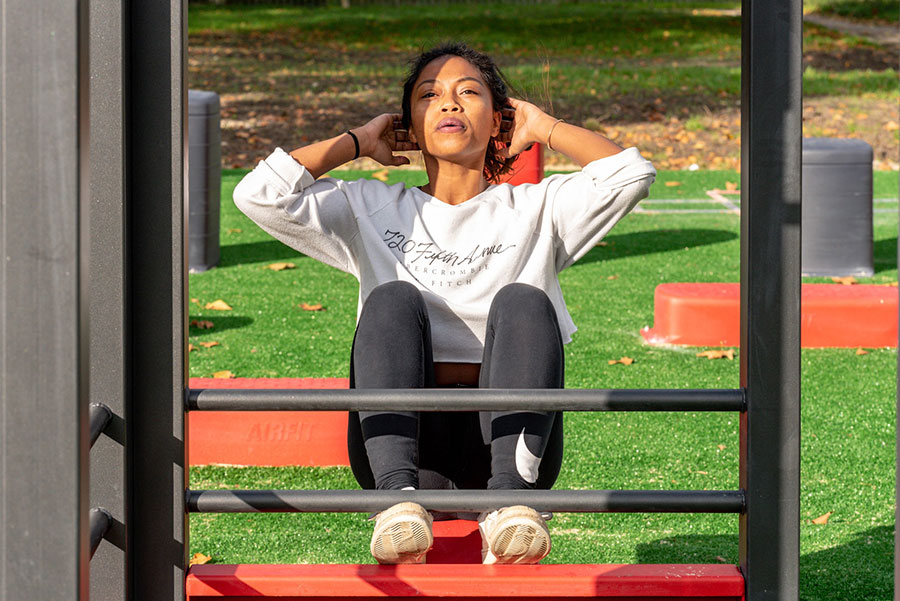The more we move, the better we feel. That’s why physical activity is key to a healthy and happy life.
Physical activity has been recognized as one of the most effective ways to decrease the risk of chronic diseases, including heart disease, hypertension, stroke, type 2 diabetes, and several types of cancers.
Physical activity also promotes positive mental health and can improve mood in chronically stressed adults and prevent the onset of depression. Though it is not a replacement for medication or therapy, it can also alleviate symptoms of anxiety.

How communities are planned and built can impact the health outcomes of the people who live there and their ability to make healthy choices.
Supports that enhance the built environment by expanding transportation options and increasing access to enjoyable spaces for physical activity and recreation provide universal benefits to the community as a whole.
BCAHL recommends the following policy options:
- The BC Government should work with communities to support the development of comprehensive policies and strategies that reduce economic, social, cultural and systemic barriers thereby ensuring greater inclusion and access to physical activity facilities and programming for all British Columbians.
- BCAHL recommends the Ministry of Finance, together with the Ministry of Health, contribute $10 million in renewed funding for the Phase 2 Action Plan to further develop and build on the momentum of BC’s Physical Activity Strategy Active People, Active Places.
- The provincial government (in particular, the Ministries of Tourism, Arts, Culture and Sport; Transportation and Infrastructure; and Environment) work together with the federal government to support municipalities to revitalize aging recreation facilities.
-
The BC Government should allocate $100 million in active transportation per year over the next ten years. Prioritize investments in:
- Walking and rolling facilities which include enhancements such as traffic-calming and safe street crossings, benches, lighting and wayfinding as these are important to meet the needs of those in wheelchairs as well as the growing demands of an aging population.
- Multi-use facilities that separate highway vehicle traffic from pedestrian and cyclists who are traveling between regional centres and outlying communities that are connected by provincial highways.
- Triple ‘A’ (all ages and abilities) cycling facilities which have been shown to motivate higher numbers of people to travel by bike (including seniors and women with children), while also reducing risk of injury for all users.[i] [ii]
- Active School Travel Planning – including education and programming as well as street design and end-use facilities for healthy, active children.
- Education Initiatives with a focus on increasing safety, removing barriers and motivating more British Columbians to try active transportation.
- An ongoing program for auditing, planning and upgrading cycling and walking facilities on provincial roads and bridges.
- Work together with First Nations’ leaders and other levels of government to address the infrastructure deficits on Reserves and to ensure there are safe, active transportation connections that link Reserves with other regional centres along provincial and municipal roads.
-
Continue to support local governments to create complete, connected communities with shops, services, food and employment accessible by transit systems and pedestrian and cycling infrastructure.
- The BC Government should support the efforts of local governments to apply a healthy living lens to their Official Community Plans.
- Prioritize for additional funding: neighbourhoods with low levels of physical activity and places where infrastructure is inadequate or at full capacity – to expedite expansion of active transportation facilities (i.e.: trails, greenways, bikeways, sidewalks and safe crossings).
-
Work with people with disabilities, representatives from disability organizations and engineers to develop provincial recommendations for universal design. These should be based on the best available evidence and consider a range of street and sidewalk users including people with visual impairment, people in wheelchairs, mobility devices and others with mobility limitations.
- Provide resources for communities to audit and design or retrofit their communities according to age/disability-friendly guidelines.
- Increase investments in public transit – emphasize projects that maximize ridership while meeting local and regional needs.
- Encourage the development of hubs with higher density housing, shops and services to facilitate transit for the surrounding community (transit oriented development) in areas where the density is considered too low to deliver efficient regular transit service.
- Establish a task force to explore innovative public transportation systems that can serve rural and remote populations and others with mobility challenges.
- Encourage and support walking groups and physical activity events.
References
- Winters M, Davidson G, Kao DN, Teschke K. Motivators and deterrents of bicycling: Comparing influences on decisions to ride. Transportation 2011;38(1):153-68.
- Winters M, Babul S, et al. Safe Cycling: How Do Risk Perceptions Compare With Observed Risk? Can J Public Health 2012;103(Suppl. 3):S42-S47

